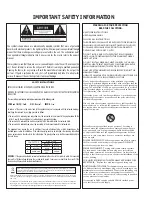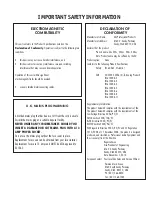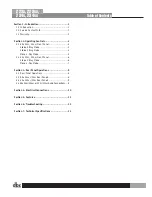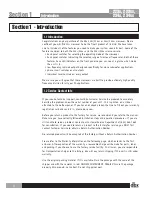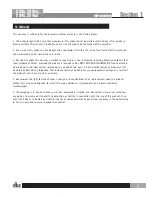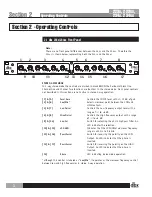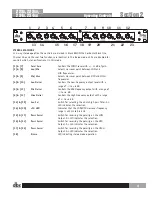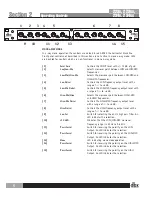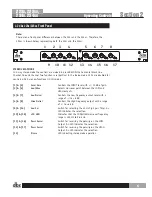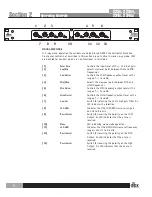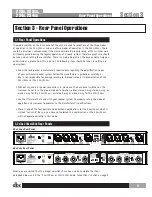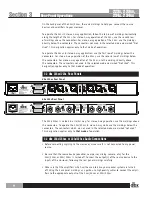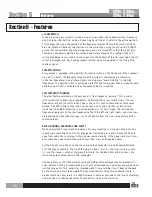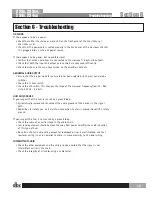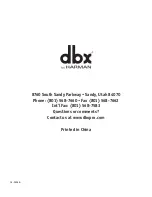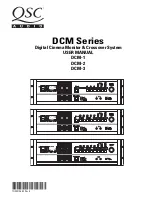
16
223s, 223xs,
234s, 234xs
Section 5
Features
11
Section 5 - Features
x10 OPERATION
If you are using your system in stereo 2-way or 3-way mode, the needed crossover frequency
may be higher than 960 Hz, making it necessary to set the x10 switch to the active position.
This changes the range of operation of the frequency selector from 45-960 Hz to 450 Hz to
9.6 kHz. All other frequency selectors remain the same. When using the x10 switch, ALWAYS
ensure that the amplifiers feeding all speaker systems are turned off or that the input gain
controls on the power amplifiers are turned down before changing the setting of the x10
switch. Not doing so may send a spurious signal to the outputs of the crossover when the x10
switch is engaged, and may damage speaker systems which are powered at the time of the
spurious signal.
POLARITY SWITCH
Every output is equipped with a polarity (Ø) reverse switch on the front panel. When speakers
are not “in phase”, the frequency response of the system is compromised, particularly
in the low frequencies. Out of phase signals can also cause “comb-filtering” in the high
frequencies. The polarity switch is extremely useful for fine tuning your sound system for peak
performance. An LED is activated when the output polarity is reversed.
LOW FREQUENCY SUMMING
The other feature accessed on the back panel is “low frequency summing”. This is useful
with systems that utilize mono subwoofers. Activating the LF sum switch “sums” the low
frequencies of both the left and right inputs. The sum is sent to channel one’s low output
marked “LF SUM”, while channel two’s low output is not used, and channel two’s phase
invert led is disabled, indicating it is not operational in “LF Sum” mode. The summed low
frequencies represent all the low frequencies of both the left and right inputs, and since lows
are generally non-directional anyway, it will not detract from the true stereo picture of the
source material.
RACK MOUNTING, GROUNDING AND SAFETY
We have provided 4 rack screws and washers for easy mounting in standard audio racks. You
should avoid mounting the unit near large power transformers or motors. Route the AC cord
away from audio lines and plug it into a power source close by. If the power cord must cross
over audio lines, you should take care to have them cross at 90 degree angles.
For the dbx 223s and dbx 234s, the input and output connectors are balanced/unbalanced
1/4” TRS type connectors. The tip of the plug is wired as hot (+), the ring is wired as cold
(-), and the sleeve is wired as the ground or shield. For the dbx 223xs and dbx 234xs, the
input and output connectors are XLR connectors.
The 234s/234xs or 223s/223xs crossovers have differentially balanced input and output cir-
cuits. Balanced wiring is recommended, even with unbalanced source devices, especially when
running long paths. Twin-conductor, shielded cable is more reliable since it does not depend
on the shield wire itself to complete the signal connection. Using twin conductor cable, a
broken shield may only result in a slight increase in noise or hum due to the lack of shielding.
You may also use unbalanced cables to connect to and from the crossover.

